How to Name Your VIP Membership Levels
Effective VIP tier names make your program a true extension of your brand. Here’s how to get them right.
 Quickstart Guide to Loyalty
Quickstart Guide to Loyalty
Effective VIP tier names make your program a true extension of your brand. Here’s how to get them right.
Send this guide to your inbox.
Your information will be treated in accordance with our Privacy Policy
Strategic VIP tier names seamlessly connect your loyalty program with your brand, making the experience resonate with your loyal customers. But, you may not know how to name your VIP membership levels. Many brands opt for silver-gold-platinum tiers, but it’s best to capitalize on your brand’s identity and customer motivations.
What are your brand values? What do you sell? What does your branding look like? These are all questions to consider when coming up with a naming strategy for your loyalty tiers.
If your brand has an iconic color scheme, you can play with the silver-gold-platinum convention and make it your brand colors. Or, the name could be an extension of your products or industry.
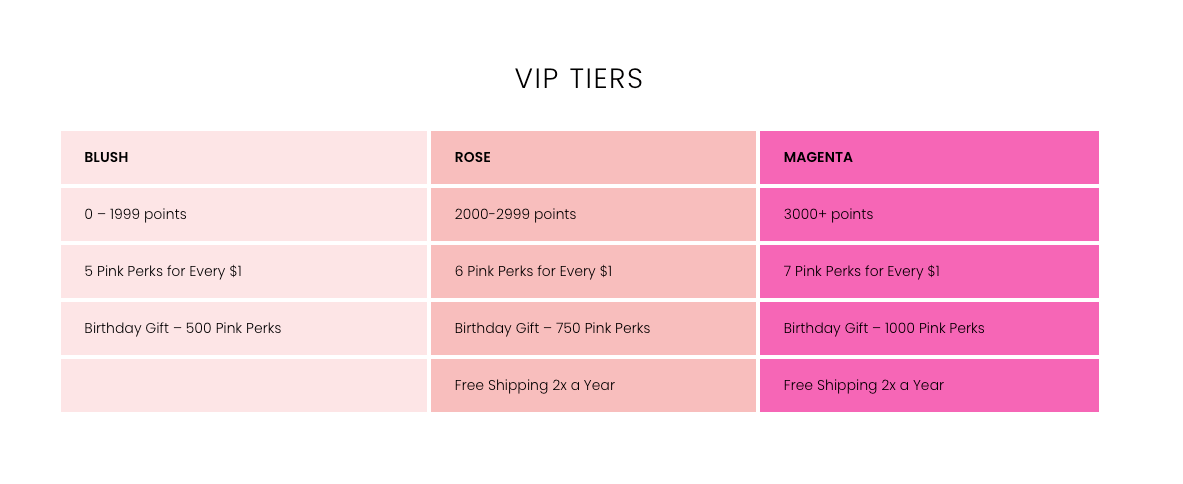
Boutique brand Pink Lily’s Pink Perks are based on the brand name and colors. Rewards customers start on Blush, and they move through tiers to reach the highest level, Magenta. The membership progression is clear, and the program’s look and feel dovetails with Pink Lily’s brand identity.
Shoppers want to feel special — that’s the whole appeal of a customer loyalty program. Even customers on the lowest VIP tier should feel like they’re part of an exclusive club.
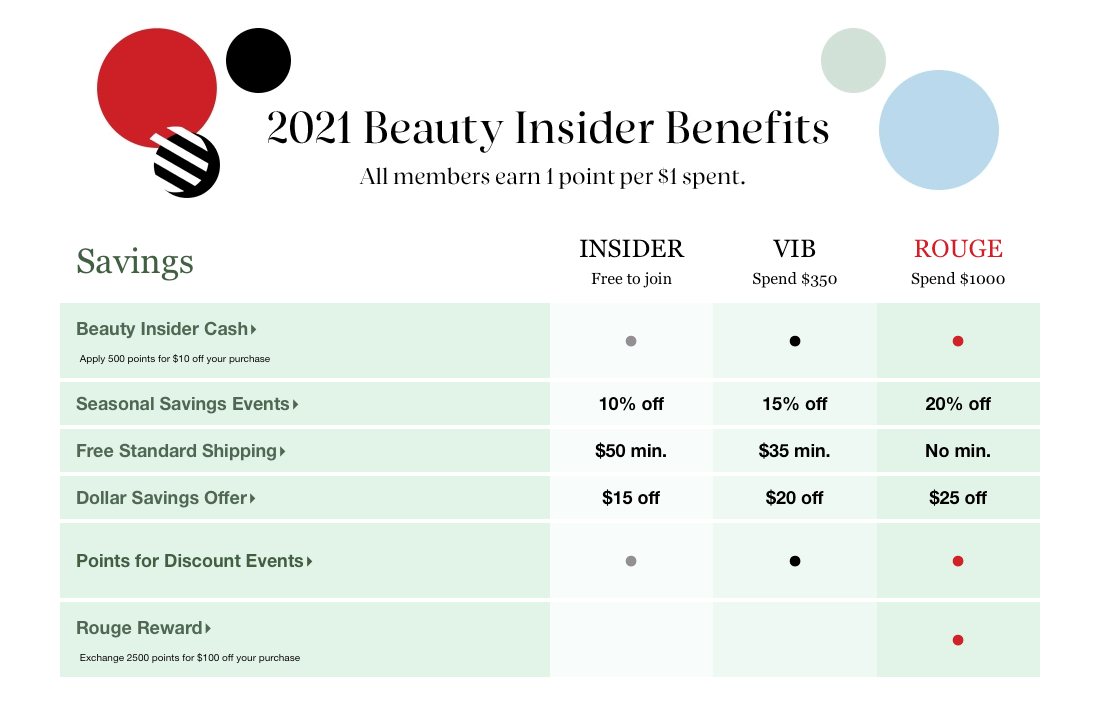
Sephora does this well. The lowest tier is “Insider,” which evokes a feeling of exclusivity and belonging, even for a customer who has just signed up for the program.
When naming your loyalty tiers, along with your overall program, remember that you are building a community. Using words that foster a sense of connection will make your loyalty members feel invested in the brand and the program.
Here are some words to consider:
These words evoke a sense of camaraderie, while also reiterating the loyalty program’s exclusivity. The more you can deliver a feeling of community with your rewards program, the more value customers will gain from the experience.
Cleverness can often get in the way of clarity, and the same is true when it comes to naming your VIP tiers. Make sure you deliver a cohesive, accessible narrative that carries through the copy of your program.
While it’s a good idea to get more creative than silver-gold-platinum, make sure your levels feature a clear progression and that the tier names convey a sense of “leveling up.” Think rookie-pro-champion or fan-groupie-bandmate.
Customers on the lowest level should feel special from the get-go but also incentivized to advance. Giving your higher tiers an aspirational feel will keep customers motivated to move through the levels.
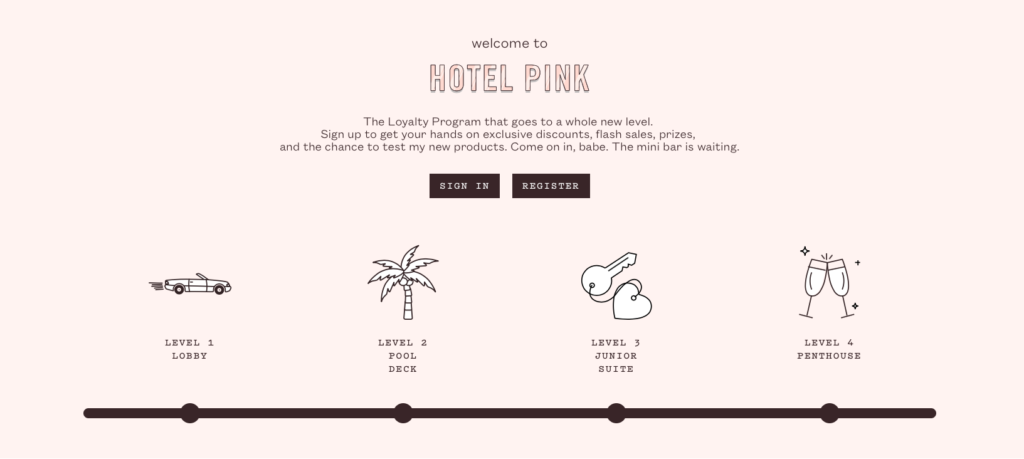
Frank Body does this well with their Hotel Pink loyalty program. The highest level is the Penthouse, and it includes the perks to match, like exclusive access to new products and greater discounts for referrals. If you’re in the Lobby, you definitely want to level up to the Penthouse.
Making customers feel valued at every level, while also incentivizing them to level up, is a balancing act, and having the right naming structure in place can help. Remember, customers want a loyalty rewards program that’s a true extension of your brand with a clear value-add to their shopping experience.
In the next chapter, we’ll go over specific loyalty strategies by industry. Read on to find out how to optimize your program for your unique customers.
Your information will be treated in accordance with our Privacy Policy

This will take just a moment…We're finding the right person on our team to help your brand!
“Yotpo is a fundamental part of our recommended tech stack.”
 Laura Doonin, Commercial Director
Laura Doonin, Commercial Director




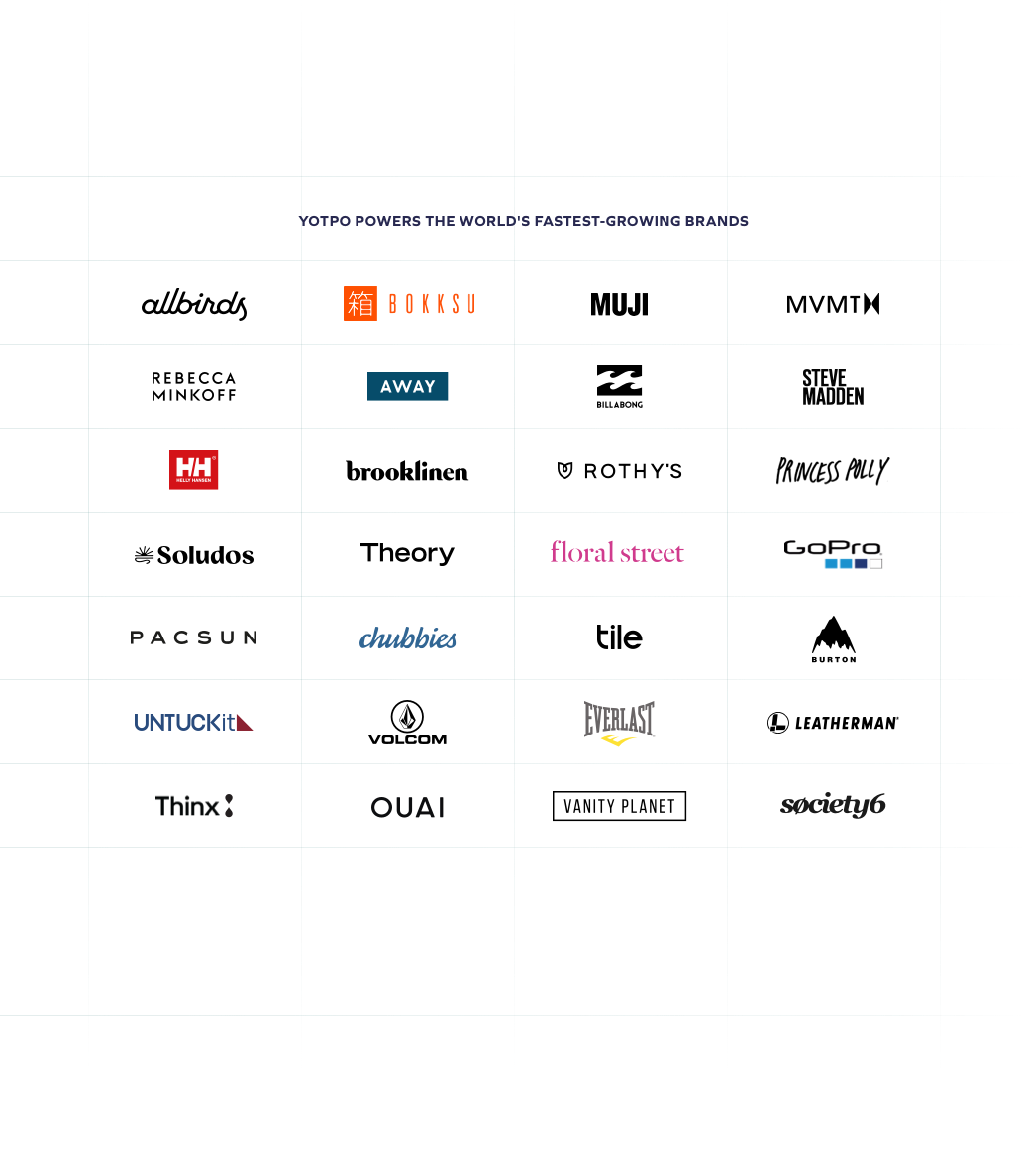

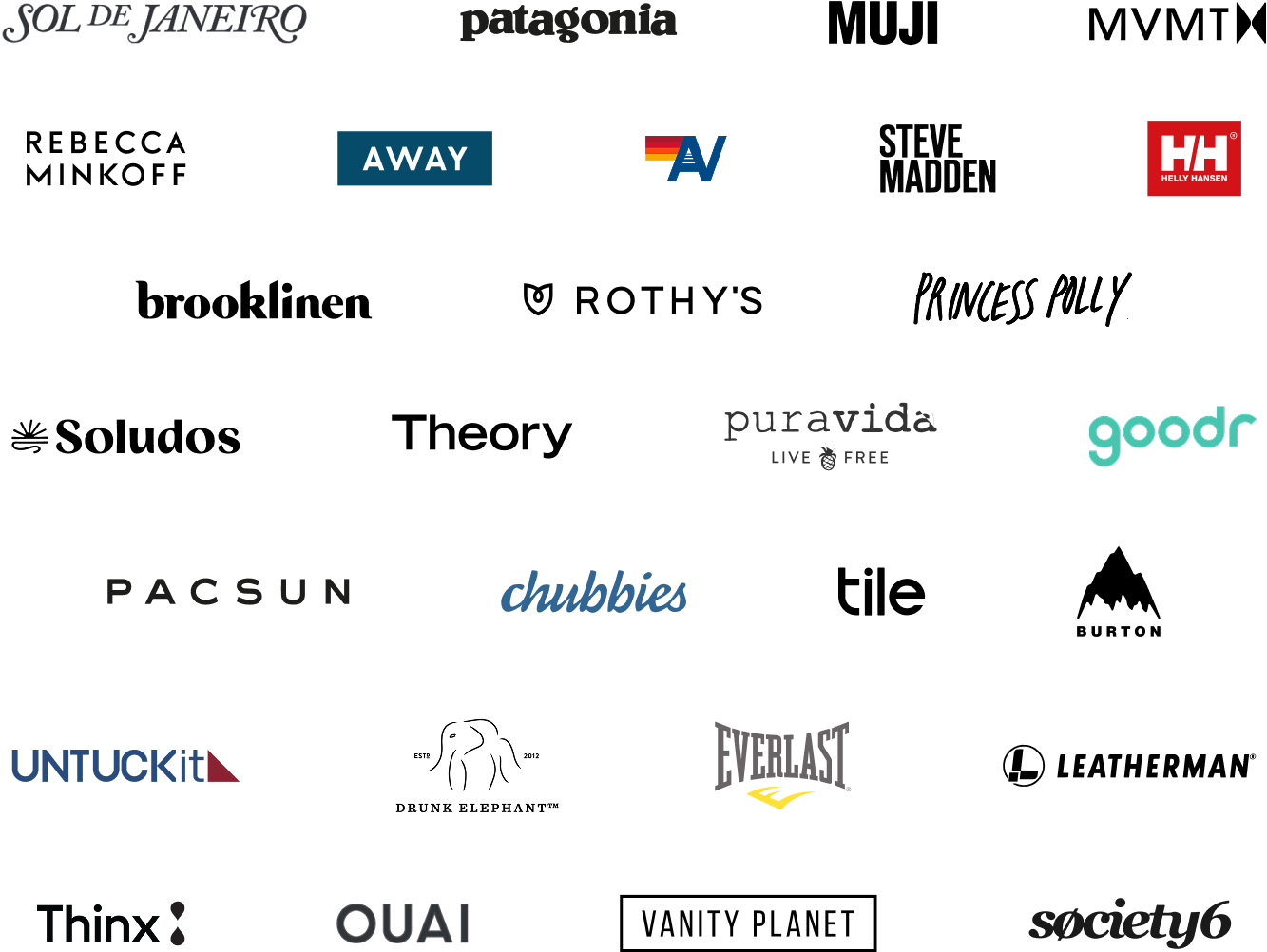



 Join a free demo, personalized to fit your needs
Join a free demo, personalized to fit your needs